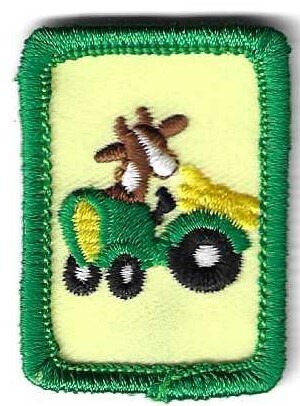Categories
On the Farm--Rae's Creations
$3.00
Sold out
Sold out
Customer reviews
Reviews only from verified customers
No reviews yet. You can buy this product and be the first to leave a review.
Product Details
Requirements:
On The Farm by Rae’s Creations
Flowers – Do one of each requirement.
Triangles – Do one of each requirement.
Circles – Do two of each requirement.
Rectangles – Do three of each requirement.
1. Define the following terms then complete the additional requirements below. Hen, rooster, chick, incubator, aviary, beak, brood, feather, molt, and nest.
a. Design a dream chicken coop on paper. Research the best ways to provide feed, water, ventilation, protection, and how to collect eggs.
b. Incubate and raise 10 chicks. Keep records of incubation, hatching, feed intake, weight gain, and mortality.
c. Learn about eggs and their grading. What is the difference between the grades? Visit your local grocery store and see what grades are available and compare them to local farm eggs.
2. Define the following terms then complete the additional requirements below. Scythe, plow, tractor, acre, sickle, cultivator, planter, harvester, post driver, and baler.
a. Research 5 tools that are found and used on a farm today and 5 tools that were found and used on a farm 100 years ago. How do they compare? How have they improved? Are some of the tools from 100 years ago still used today?
b. Design a dream farm on paper. What animals will you have and why? What crops will you produce? What farming equipment will you need?
c. Research 3 brands of farming equipment. Visit their showrooms if you can. Compare and contrast 3 different machines that all 3 companies offer.
3. Define the following terms then complete the additional requirements below. Gilt, sow, barrow, boar, pigpen, farrowing crate, ear notching, market hog, slop, piglet.
a. Research pigs and their breeds. Which breeds are better for what? Make a chart showing the different breeds of pigs and the benefits of each breed.
b. A common misconception is that pigs will eat anything. Research the best feed to feed pigs. What can be included in slop and what can pigs not eat? Create a nutritional meal plan for a show pig.
c. Visit a pig farm. Learn what they feed their pigs, what vaccinations they are given, what care they are given, and how they sell their pigs (if they do). Find out what the criteria is for a good show pig.
d. Raise a feeder pig from weaning to market. Keep all records of weight gain, feed, medication, vaccination, and care.
4. Define the following terms then complete the additional requirements below. Stallion, mare, gelding, foal, colt, filly, saddle, flank, bridle, withers, stirrup, hock, hoof.
a. Research the different breeds of horses. What is each breed best at? Create a chart comparing the different breeds and include a picture of each.
b. What is the difference between western saddles and English saddles? Find a picture or draw one of each and then label them. Explain the difference between western riding and English riding.
c. Visit a horse farm or riding facility. Learn about the proper care of horses including feed, vaccinations, exercise, and cleanliness.
5. Define the following terms then complete the additional requirements below. Ewe, fleece, flock, wool, lamb, lanolin, ram, shepherd, sheep, shears.
a. How is wool collected from a sheep? How are the wools sorted and graded? Research what wools are used for clothing and how they are selected.
b. Research the different breeds of sheep. Compare and contrast the different breeds.
c. Visit a sheep farm or a farm where sheep are raised. Learn about the proper care of sheep including feed and vaccinations. If possible, learn how to shear a sheep.
Save this product for later
On the Farm--Rae's Creations
Powered by Lightspeed
Display prices in:USD
